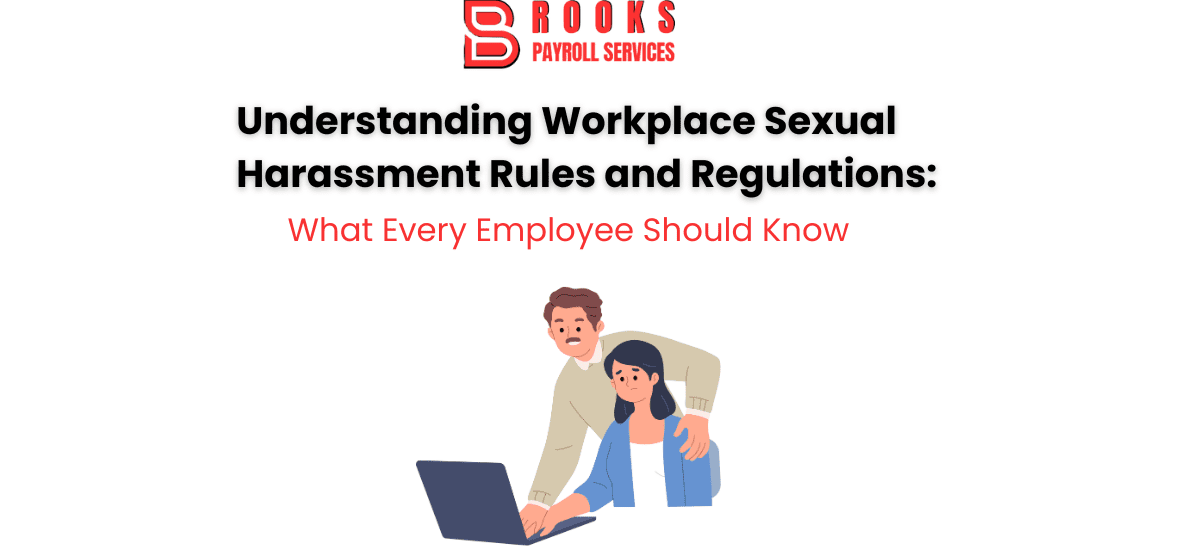Understanding Workplace Sexual Harassment Rules & Regulations
A safe and respectful work environment is crucial for the well-being and productivity of employees. Workplace sexual harassment is a serious issue that affects individuals across various industries. It is essential for all employees to be aware of the rules and regulations surrounding sexual harassment to promote a culture of respect, equality, and inclusivity in the workplace. In this blog, we will delve into the key aspects of workplace sexual harassment, its impact, and the rights and responsibilities of employees under the relevant laws.
Defining Workplace Sexual Harassment
Workplace sexual harassment refers to any unwelcome sexual advances, requests for sexual favors, or any other verbal, physical, or visual conduct of a sexual nature that creates a hostile, intimidating, or offensive work environment. It can take various forms, including comments, jokes, gestures, or inappropriate physical contact, and can occur between employees, between a supervisor and a subordinate, or involving third parties.
Understanding the Impact
Sexual harassment can have severe consequences for the victims, leading to emotional distress, anxiety, and a decline in work performance. It can also damage team dynamics, result in high employee turnover, and harm the reputation of the company. Recognizing and addressing sexual harassment is essential for fostering a healthy and productive work environment.
Workplace Sexual Harassment Rules and Regulations
- Title VII of the Civil Rights Act of 1964: Under Title VII, workplace sexual harassment is considered a form of sex discrimination and is prohibited in all organizations with 15 or more employees.
- Equal Employment Opportunity Commission (EEOC): The EEOC is responsible for enforcing federal laws that prohibit workplace discrimination, including sexual harassment. Employees who experience sexual harassment can file a complaint with the EEOC.
- State Laws: Many states have their own laws and regulations that address workplace sexual harassment. These laws may provide additional protections and remedies for victims.
- Employer Policies: Employers should have clear policies in place that prohibit sexual harassment and outline procedures for reporting and addressing incidents. Employees should familiarize themselves with these policies.
Rights and Responsibilities of Employees
As an employee, it is crucial to understand your rights and responsibilities regarding workplace sexual harassment:
- Right to a Safe Workplace: Every employee has the right to work in an environment free from sexual harassment and discrimination.
- Reporting Incidents: If you experience or witness sexual harassment, it is important to report it promptly to your supervisor, human resources, or another designated authority within your organization.
- No Retaliation: Employees who report sexual harassment should not face retaliation. It is illegal for employers to punish or discriminate against employees who exercise their rights.
- Cooperation with Investigations: If an investigation is initiated, employees should cooperate fully with the process to help ensure a fair resolution.
Creating a Respectful Workplace Culture
To foster a respectful workplace culture and prevent sexual harassment, organizations can take the following steps:
- Training and Awareness: Conduct regular training sessions to educate employees about what constitutes sexual harassment and how to prevent it.
- Open Communication: Encourage open communication channels for employees to report incidents or express concerns without fear of retaliation.
- Promote Diversity and Inclusion: Embrace diversity and inclusion initiatives that celebrate differences and promote equality in the workplace.
- Leading by Example: Managers and supervisors should set a positive example of respectful behavior and respond promptly to any reports of harassment.
Conclusion
Understanding workplace sexual harassment rules and regulations is crucial for every employee. By being aware of their rights and responsibilities and working collectively to create a respectful and inclusive work environment, employees can contribute to the prevention and eradication of sexual harassment. Organizations must be proactive in implementing policies, providing training, and taking appropriate action to ensure a safe and respectful workplace for all. Together, we can build a culture that values and protects every individual’s dignity and well-being.










